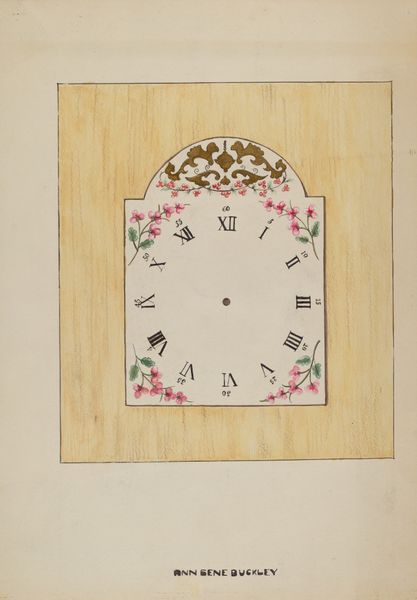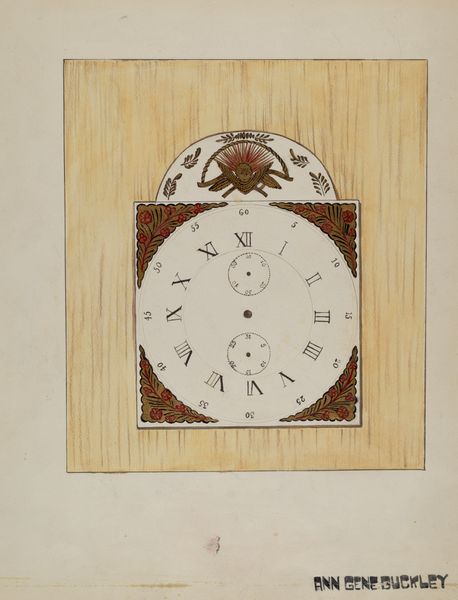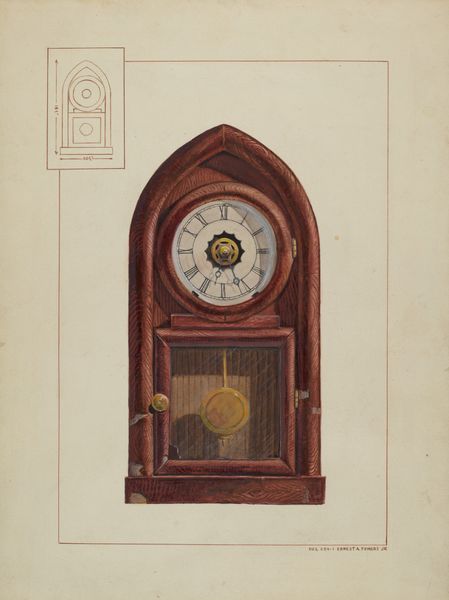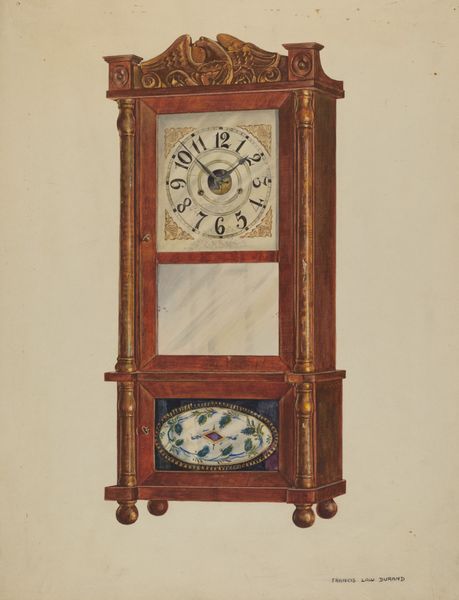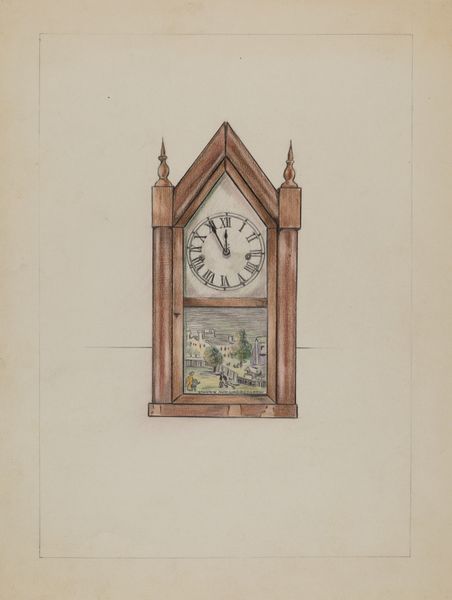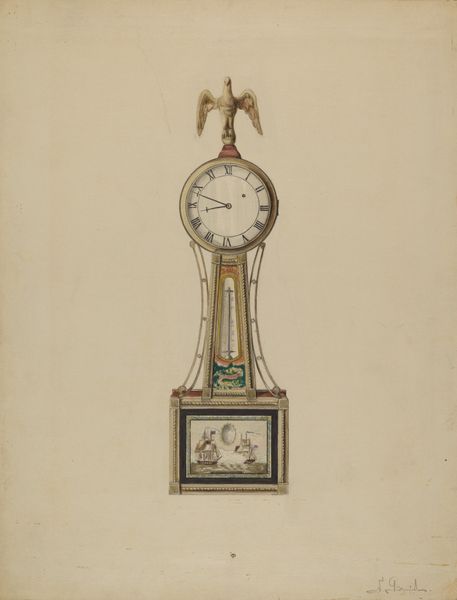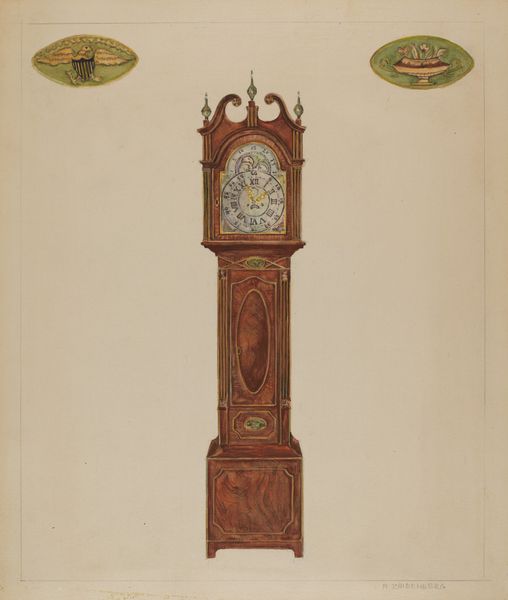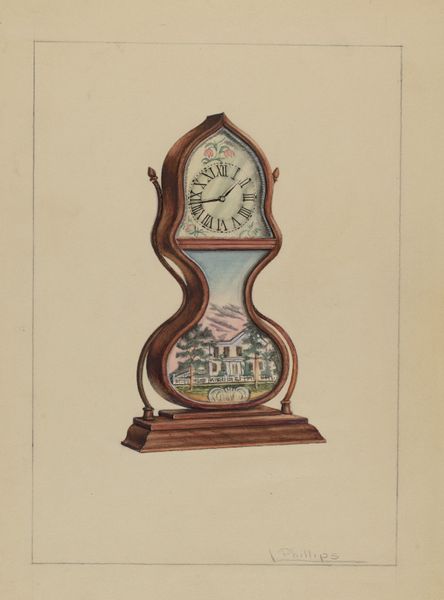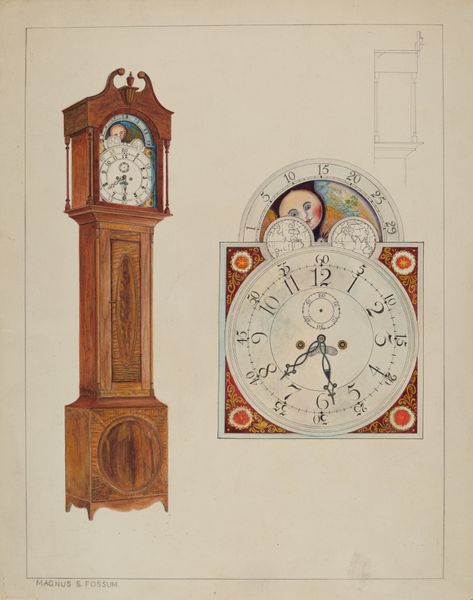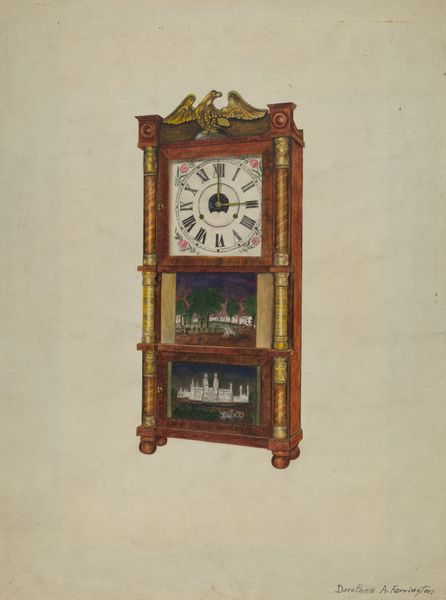
drawing, watercolor
#
drawing
#
watercolor
#
folk-art
Dimensions: overall: 34.9 x 24.6 cm (13 3/4 x 9 11/16 in.) Original IAD Object: Scale of drawing: 1/2 size
Copyright: National Gallery of Art: CC0 1.0
Curator: Before us is "Clock Face," a watercolor and drawing work crafted around 1936 by Ann Gene Buckley, identified as folk art. Editor: It's surprisingly gentle. The pale hues, the simplified forms – it feels less like a functional object and more like a nostalgic daydream. Almost like a memory of a simpler time, carefully rendered. Curator: The choice of rendering time as a folk-art object is interesting, though, don't you think? Editor: Absolutely. Consider the 1930s, when this piece was made: rural American life was in transition and economic crisis, challenged by modernity. So the artwork seems to hearken back to something stable, tangible, maybe idealized, in opposition to the chaos felt at the time. Even if folk art was experiencing a popular revival and interest by elites. Curator: True, the folksy aesthetic – look at those little flowers around the face. Editor: Which could reference a range of rural values from resourcefulness to an association with crafts passed down through generations. Even domesticity is reflected in the details, from its colors to that miniaturized image on top of what is perhaps the home depicted itself. Curator: Which has a timeless element, in terms of representing idealized notions of "home." Clocks, timekeeping, of course represent temporality, or even mortality. Time seems almost frozen here, doesn't it? No clock hands pointing or turning to capture the current moment. Editor: The blank face also lets people see themselves reflected on it. Like, maybe the blank clock invites each viewer to ask what they will do with time that they've been given, or consider that its value lies only on what’s written by its owner? This is the core of the dialogue between object and self. It captures attention so much in the space it creates in that dialogue, by focusing only in its potential. Curator: I like the idea of its blankness embodying possibility. It becomes more about the symbols than any fixed meaning, opening us up to how we read and remember them. Editor: Yes! An everyday object transfigured through image. That is how we bring the ordinary and routine into focus so that we create not only something pleasing but perhaps timeless.
Comments
No comments
Be the first to comment and join the conversation on the ultimate creative platform.
